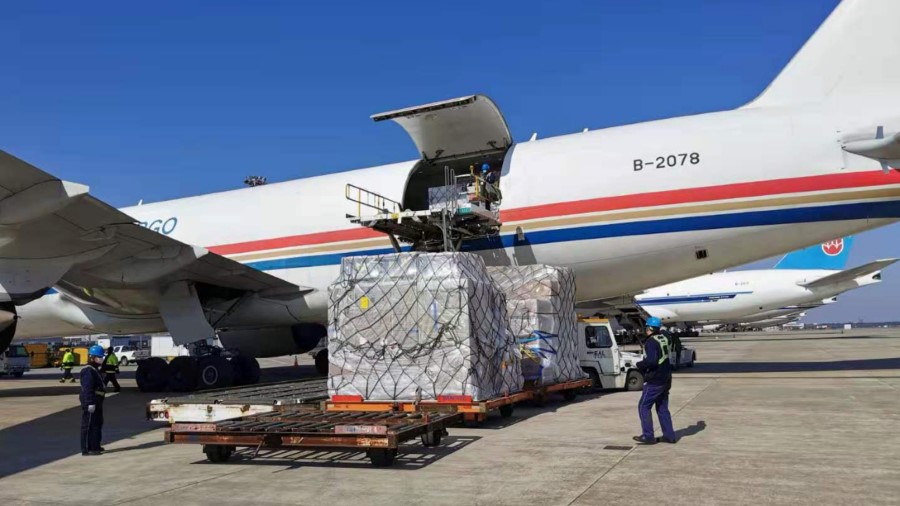When navigating the complex world of logistics, understanding the terminology used in air and ocean freight is essential for effective shipping management. One term that frequently arises in both domains is Cubic Meter (CBM). While it may appear to be a straightforward measurement, the application and implications of CBM can differ significantly between international air and ocean transport. Let’s explore the nuances of CBM in both contexts to clarify their similarities and differences.
What is CBM?
Cubic Meter (CBM) is a unit of measurement that quantifies the volume of goods being shipped. It is calculated by multiplying the length, width, and height of an item in meters. The formula is as follows:
This measurement is crucial in logistics as it helps determine shipping costs, space requirements, and load capacity. Both air and ocean freight services utilize CBM to facilitate efficient cargo handling and billing.
1. CBM in International Air Transport
In the context of international air transport, CBM plays a vital role in calculating the dimensional weight of cargo. Due to the limited space available in aircraft cargo holds, airlines often charge based on the volume of the cargo rather than its actual weight. This is particularly important for lightweight but bulky items.
a. Dimensional Weight Pricing
Airlines use a dimensional weight formula to calculate freight charges based on CBM. The general formula for dimensional weight is:
Typically, the dimensional weight factor for air transport is around 166 kg per cubic meter, though this can vary between carriers. When the dimensional weight exceeds the actual weight of the shipment, shippers are charged based on the dimensional weight, ensuring that the space occupied by cargo is adequately compensated.
b. Importance of Accurate Measurement
Accurate measurement of CBM in air freight is crucial for cost-effective shipping. Overestimating CBM can lead to unnecessary charges, while underestimating can result in penalties or shipment delays. Therefore, it is essential for shippers to meticulously measure their packages and provide precise CBM calculations.
2. CBM in International Ocean Transport
In ocean freight, CBM is used differently due to the nature of shipping containers and the vast capacity of cargo ships. The ocean freight industry generally has more room for cargo, leading to different pricing and volume considerations.
a. Pricing Based on CBM
Ocean carriers typically charge based on the container size and its total volume rather than dimensional weight. A standard shipping container, such as a 20-foot or 40-foot container, has fixed volume capacities, which influence the shipping costs.
A 20-foot container can hold approximately 33 CBM.
A 40-foot container can accommodate around 67 CBM.
Shipping costs in ocean transport are usually calculated per container rather than per cubic meter, making it essential to maximize the use of available space in the container for cost efficiency.
b. Loading Considerations
In ocean transport, the relationship between CBM and weight is less critical than in air transport. While CBM still plays a role in planning how to load containers and ensuring compliance with weight limits, the emphasis is more on achieving a balanced load across the vessel and optimizing the use of space.
3. Key Differences Between Air and Ocean CBM
a. Calculation and Application
In air transport, CBM is essential for determining dimensional weight, and pricing is based on the greater of the actual weight or the dimensional weight.
In ocean transport, CBM is used primarily for calculating container capacity and determining the appropriate container size for shipment.
b. Impact on Pricing
Air freight rates are more sensitive to CBM due to space constraints and the high cost of air travel.
Ocean freight rates generally offer more flexibility in pricing based on container capacity rather than volume alone, resulting in different economic considerations for shippers.
4. Practical Implications for Shippers
Understanding the distinctions between CBM in air and ocean transport is crucial for effective logistics planning. Here are some practical implications for shippers:
Precise Measurements: Accurate CBM calculations help avoid additional charges and ensure compliance with carrier requirements.
Mode Selection: The choice between air and ocean transport should consider not only costs but also volume and weight constraints to determine the most efficient shipping method.
Container Utilization: For ocean freight, maximizing container space is essential for reducing shipping costs, while in air freight, shippers should be aware of dimensional weight charges to avoid unexpected expenses.
Conclusion
While the Cubic Meter (CBM) serves a similar fundamental purpose in both international air and ocean transport—quantifying cargo volume—the implications for pricing, loading, and logistics management differ significantly between the two modes. In air transport, CBM is crucial for calculating dimensional weight and ensuring accurate shipping costs, while in ocean transport, it plays a key role in container capacity and load optimization.
Understanding these nuances allows shippers to make informed decisions, optimize costs, and enhance overall efficiency in their shipping operations. Whether navigating the skies or the seas, a clear grasp of CBM’s role is indispensable in today’s global logistics landscape.
























